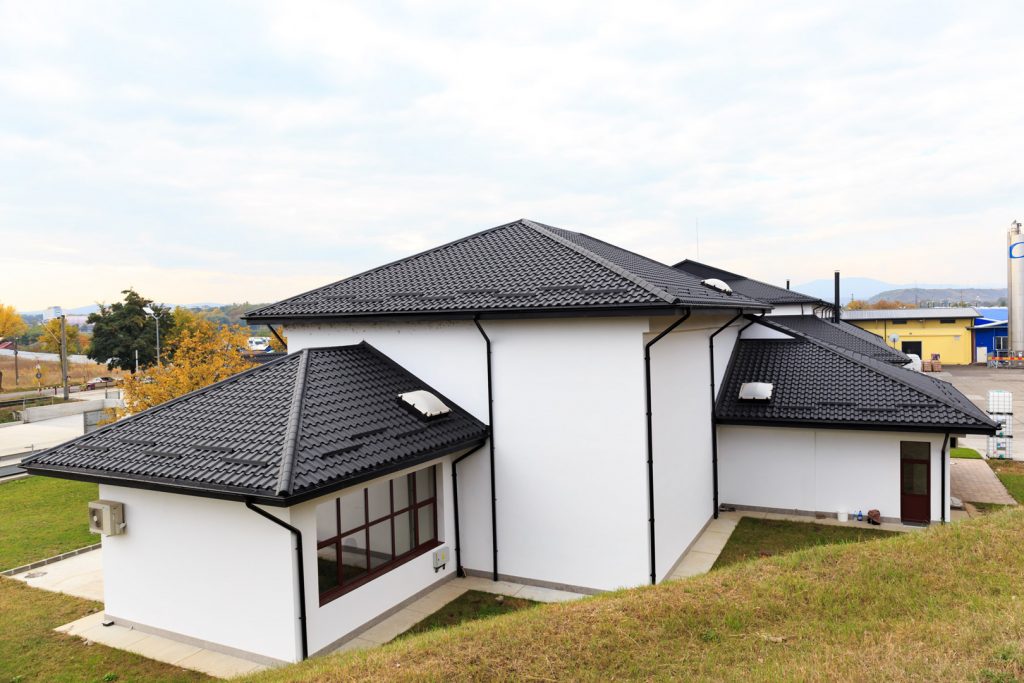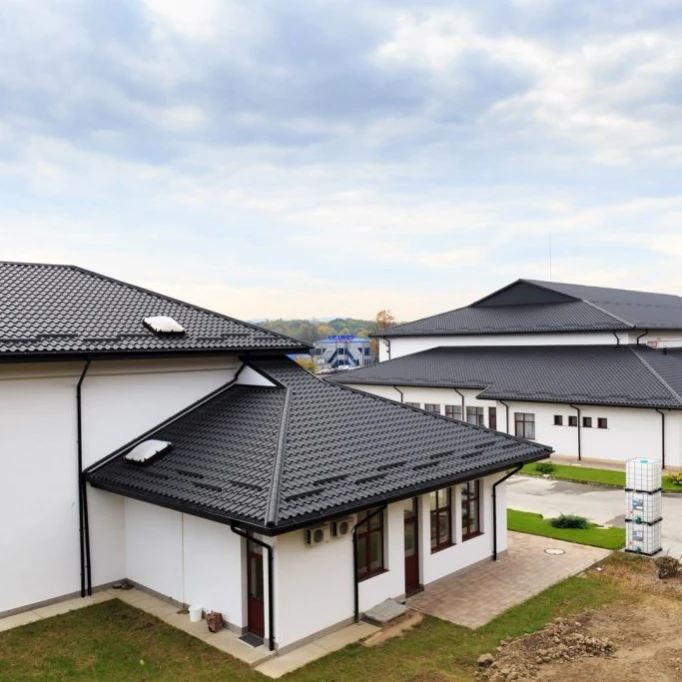Deciding on the type of roof is a key step in building a house, affecting not only its appearance, but also its functionality and costs. One of the attractive options is the **hip roof**, which is characterized by universal use, durability and aesthetic benefits. This type of roof is especially popular with single-story houses, but its use is much wider.
Characteristics of a hip roof:
A hip roof is formed by four roof planes:
- The longer sides have the shape of a trapezoid.
- The shorter sides are triangular.
These planes converge in a ridge that runs parallel to the longer sides. Alternatively, the roof can have the form of a tent, where all slopes form triangles connected at one point.
The roof slope usually oscillates between 20-30 degrees, which allows adaptation to specific requirements and building style.
Advantages of a hipped roof:
- Aesthetic value
A hipped roof gives a house a harmonious and elegant appearance that fits both traditional and modern architectural styles.
- Weather resistance
The even distribution of slopes ensures that the roof is resistant to wind, rain and snow loads.
- Effective water drainage
The slope of the roof allows for quick and natural water drainage, which extends the life of the roofing.
- Customization options
Thanks to its universal design, the hipped roof can be adapted to different building types and floor plans.
Hipped roof construction:
The basis of a hipped roof is a solid truss structure:
- For smaller spans (up to 12 m), a simple truss with rafters is recommended.
- For larger spans (up to 16 m), a purlin truss with additional supports such as columns and struts is required.
However, these supports may limit the usability of the attic space, which must be taken into account when planning.

Choosing a roof covering:
Due to the specific shape of a hip roof, it is necessary to choose the covering carefully:
- Tile sheet metal roofing is popular due to its lightness, durability and easy installation.
- In addition to sheet metal roofing, traditional ceramic or concrete tiles can also be used, which ensure a classic look and high durability.
Precise adjustment of the material to the shape of the roof is essential for minimizing waste and achieving an aesthetic appearance.
The process of building a hip roof:
Planning
- Roof design with regard to the slope, roofing material used and static requirements.
- Adaptation of the structure to the climatic conditions in the area.
Installation of the truss
- Precise adjustment of all elements (rafters, purlins, joints) to ensure structural stability.
Roofing work
- Installation of the roof covering, ensuring tightness and installation of a gutter system for water drainage.
When to choose a hip roof?
A hip roof is particularly suitable for:
- Single-storey houses with a non-residential attic.
- Areas with windy or snowy climates where higher roof resistance is required.
Constructions where the aesthetic appearance of the roof plays an important role.
Summary:
A hip roof represents a combination of elegance, functionality and durability. However, its selection requires careful planning and professional knowledge. Consulting with an architect or builder is the key to a successful implementation that will ensure that your roof will not only be beautiful, but also fully functional for many years.


























-90x90.webp)



















